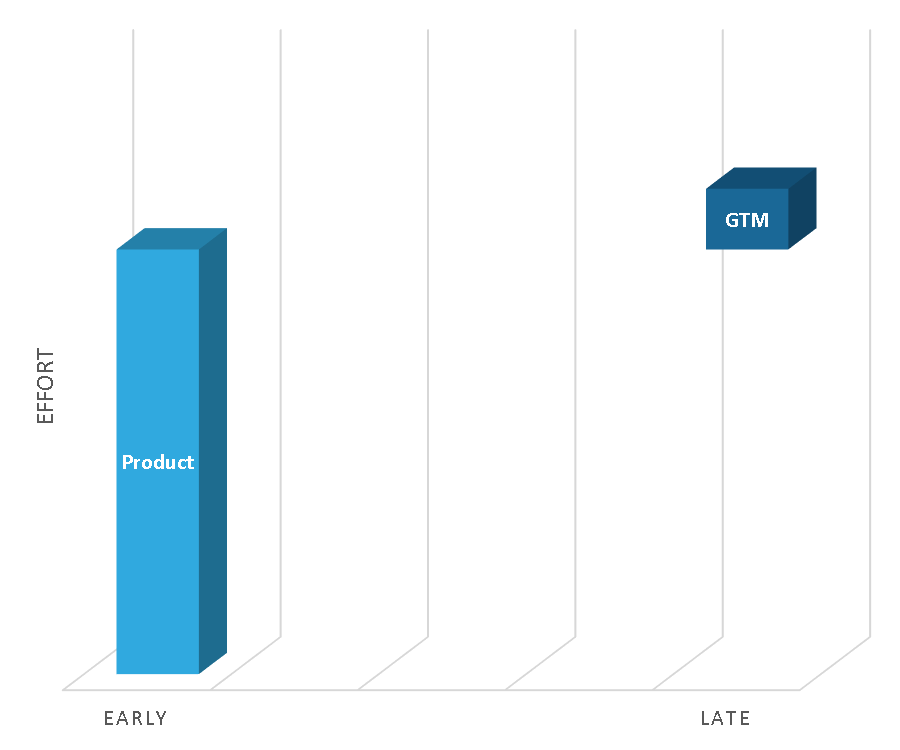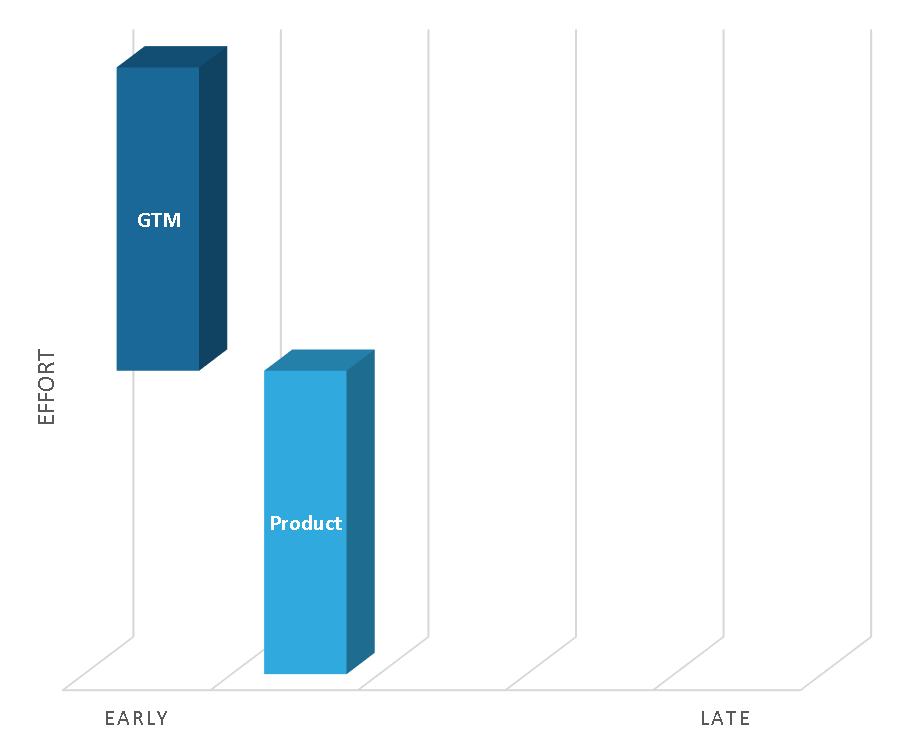Go To Market

“Go-to-market or go-to-market strategy is the plan of an organization, utilizing their inside and outside resources (e.g. sales force and distributors), to deliver their unique value proposition to customers and achieve competitive advantage.” — Wikipedia
Too little. Too late.

GTM is often almost an afterthought done as part of marketing, which is associated with advertising, an activity done after the product is built. This is often “too little, too late – resulting in product rework, wasted time, money, and perhaps the entire opportunity.Click edit button to change this text.
Define GTM Before Building Product.

In reality, GTM and the pre-requisite segmentation, persona development, competitive analysis, and value props hypotheses should be done before writing a line of code. And at least as much effort should be put into the GTM as the MVP.
Silicon Valley is littered with dead startups that thought if they built the next great widget, customers would just buy.
It’s natural to get excited and impetuous about the potential value of one’s unique solution. However, the harsh the reality is that it is very difficult to reach prospective customers. In fact, it’s even worse than that. People are sick and tired of being sold to. The last thing they want aside from death and a dentist appointment is being pitched to by a salesperson. They’ve gotten good at blocking out interruption marketing – they have caller ID, email screening, spam filters.
So, how are you going to reach your prospects?
This is arguably at least as important as the product or solution itself. Particularly in the enterprise space, it can be very complex to figure out who you need to reach; how are you going to reach them; how are you going to get their attention; and can you convince them to buy? And even before any of that, are you clear about your business’ objectives, your comparative advantages, the unmet need and your value prop in a competitive landscape where status quo is often your biggest competitor?
Especially in tech, many startups are founded by engineers who are eager to build their products. They have a good idea of the target market, but rarely pursue the rigor or detail of defining segments, buying processes, cost centers, personas, value props, and tailored messaging. The result is often ineffective awareness tactics and messaging – i.e., poor sales.
To make matters worse, often early stage founders have multiple potential segments. Because they are unsure which will “hit,” they cast a wide net attempting to satisfy multiple segments at once. The result is a LCD (least common denominator) catastrophe where they don’t serve any particular segment well, so lose on all fronts. Instead, the approach should be to “fail fast.” That entails breaking a problem into serial, testable parts, in this case market segments.

PrioritizeMarketing has the unique combination of 30 years of B2B and broad industry experience, a proven methodology that is flexible and adaptable for a startup’s unique circumstance.
